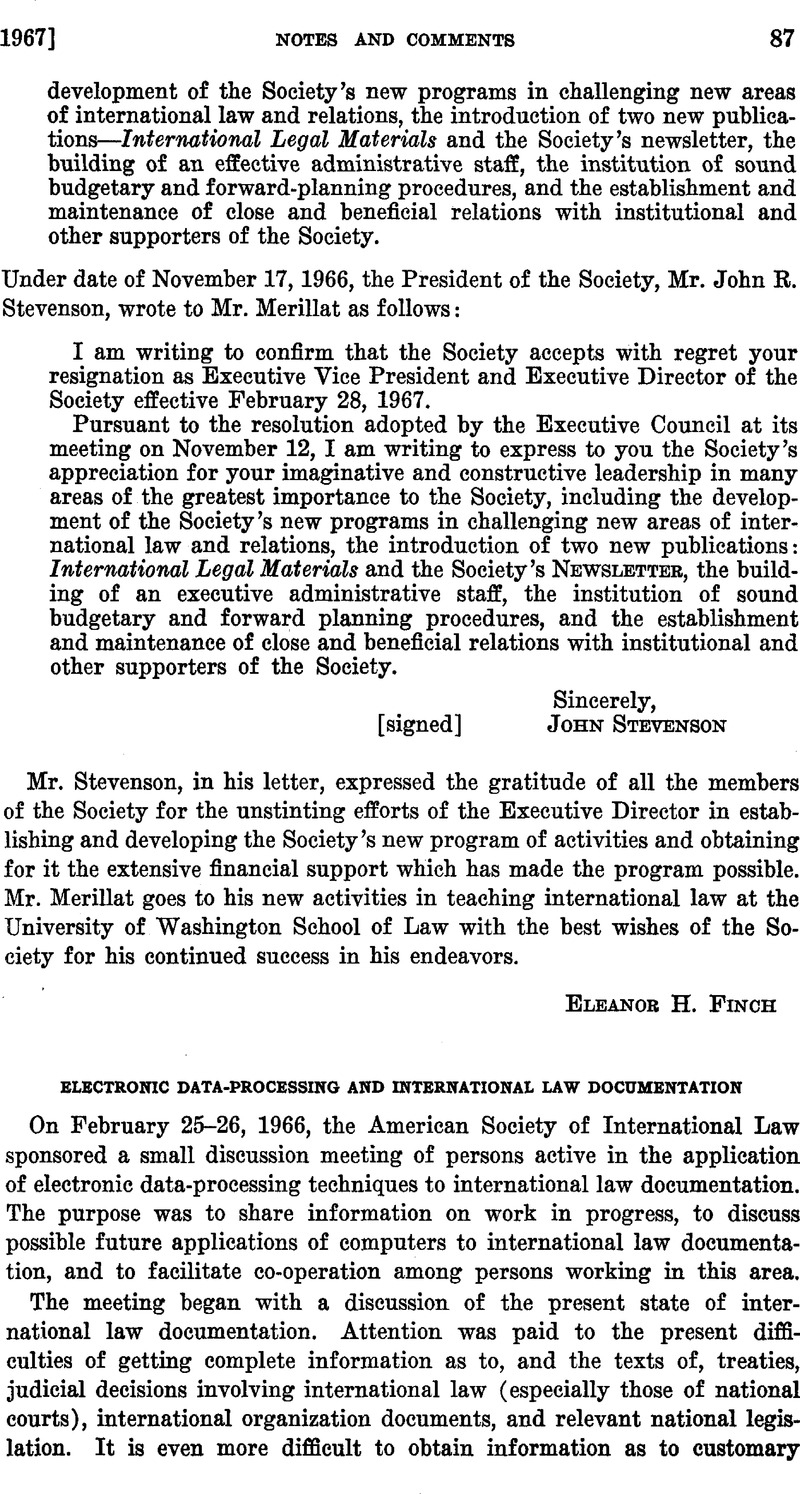Article contents
Electronic Data-Processing and International Law Documentation
Published online by Cambridge University Press: 28 March 2017
Abstract

- Type
- Notes and Comments
- Information
- Copyright
- Copyright © American Society of International Law 1967
References
1 In 1961 the Historical Office of the XJ. S. Department of State prepared a memorandum reporting that of 77 countries surveyed, over three-fourths made no provision for the serial publication of diplomatic correspondence even on a selective basis. Foreign Relations of the United States is one of the few such publications, and its volumes usually follow the events they deal with by at least twenty years.
2 See Peter H. Kohn, “Institutionalism in the Law of Treaties: A Case of Combining Teaching and Research,” 1965 Proceedings, American Society of International Law 93.
3 The Agreement between the Parties to the North Atlantic Treaty Regarding the Status of Their Forces, signed at London, June 19, 1951, and the German Supplemental Status of Forces Agreements, signed at Bonn, Aug. 3, 1959, together with a keyword- in-context index have been printed as desk books. The agreements in machine printed form are 133 pages, and the index is 344 pages.
4 There was discussion at the meeting about the possibility and desirability of computerizing in full text the principal documentation of the United Nations. It was learned after the meeting that, although the United Nations does not computerize its regular documentation, the copy for the printed Official Records of General Assembly and Security Council meetings is typed on a typewriter with a punched paper-tape output. This tape is fed into a second, automatic typewriter that adjusts the right-hand margins to be even and types the final copy for photo-offset printing. This tape is identical with the paper tape used in the standard paper-tape readers on computers. This means that the United Nations may be preparing as a by-product of its present procedures an expensive component of a full-text electronic system. The possibility of using the paper tapes for data-processing purposes deserves investigation. Of course, the tapes might require some correction where headings in different type face were inserted or corrections were made in the proof.
- 1
- Cited by


